France is a powerhouse in the wine world, and that’s mostly because of Bordeaux. The region is responsible for some of the most famous (and expensive) wines in the world. It’s also the largest wine-producing region in the country by volume, and the best Bordeaux wines are often considered the best wines anywhere.
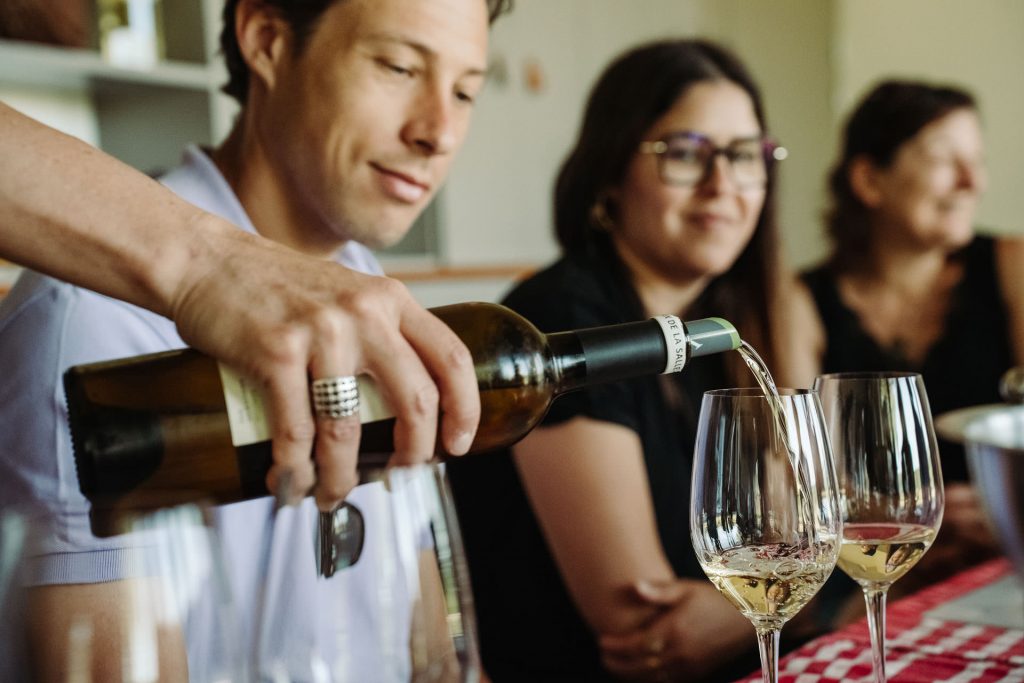
Given the amount of wine from Bordeaux, and the sometimes subtle nuances that differentiate a good bottle from a great bottle, it can be challenging to know where to start. In this guide, you’ll get a brief overview of this wine region, the grapes that make the best Bordeaux wine.
The easiest (and most delicious) way to learn about why Bordeaux wine is so special, is with a sommelier-led tasting in a local wine bar. This is exactly what you’ll get with our Bordeaux Ultimate Food Tour. Read to the end to learn about that, too.
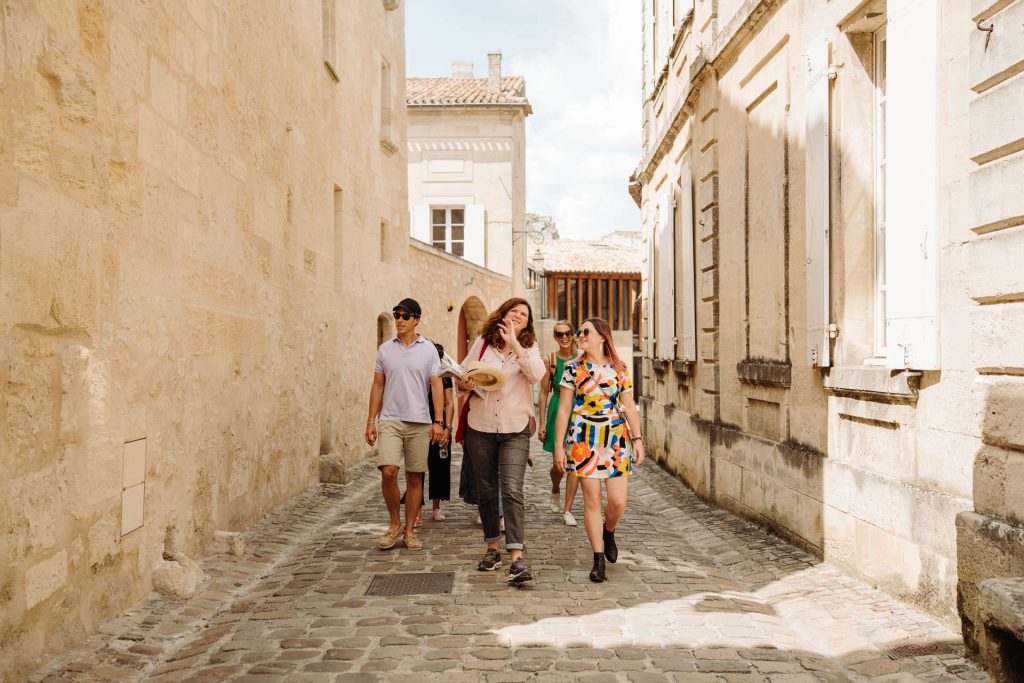
Bordeaux Terroir
Bordeaux, France’s second-largest wine region, spans more than 60 appellations (AOCs). These line both sides of the Dordogne and Garonne rivers, which meet near the city of Bordeaux, and extend into the surrounding hills. This geography shapes a distinct terroir, defined by environmental factors—especially climate and soil—that give the region’s wines their unique character.
The nearby Atlantic Ocean brings a moderate maritime climate with relatively high humidity. Based largely on soil differences, winemakers divide Bordeaux’s AOCs into three main growing areas. Soil types change depending on a vineyard’s distance from the rivers and which side of the river it lies on. These soil variations allow different grape varieties to thrive in different parts of the region.
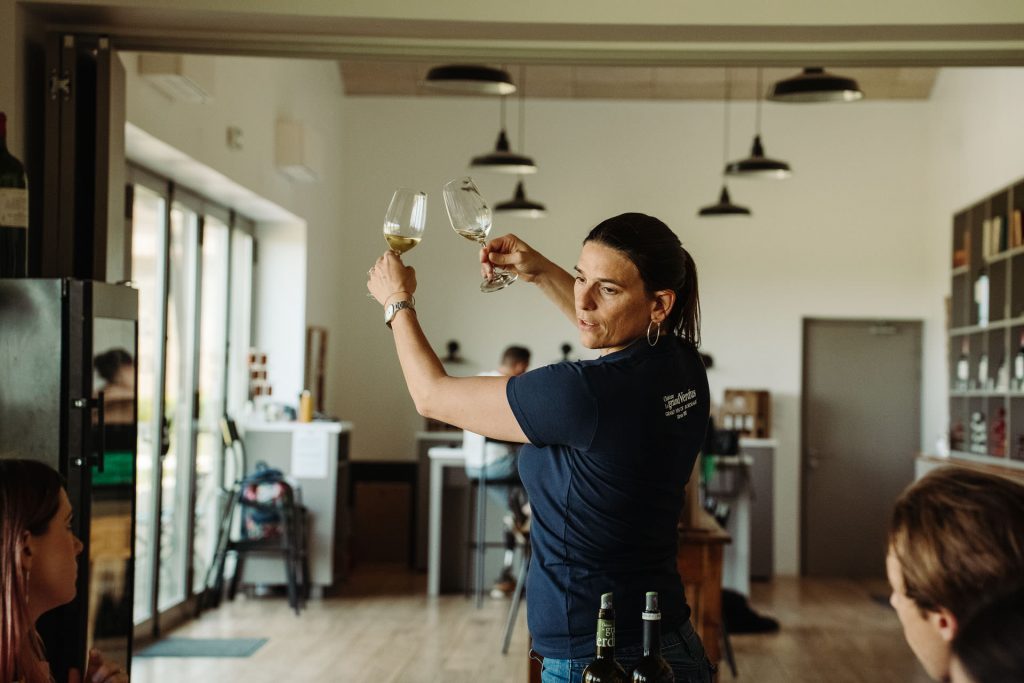
The three main growing areas are:
- The Left Bank: Located on the left (southern/western) side of the Garonne, this soil contains more gravel and is warmer and drier. These AOCs are best known for Cabernet Sauvignon.
- The Right Bank: Located on the right (northern/eastern) side of the Dordogne, this soil contains more clay and limestone and is cooler and wetter. These AOCs are best known for Merlot.
- Entre-Deux-Mers: Located between the two rivers (the name means “Between Two Seas”), this soil contains clay, limestone, and sand. These AOCs are best known for Bordeaux’s white wines.
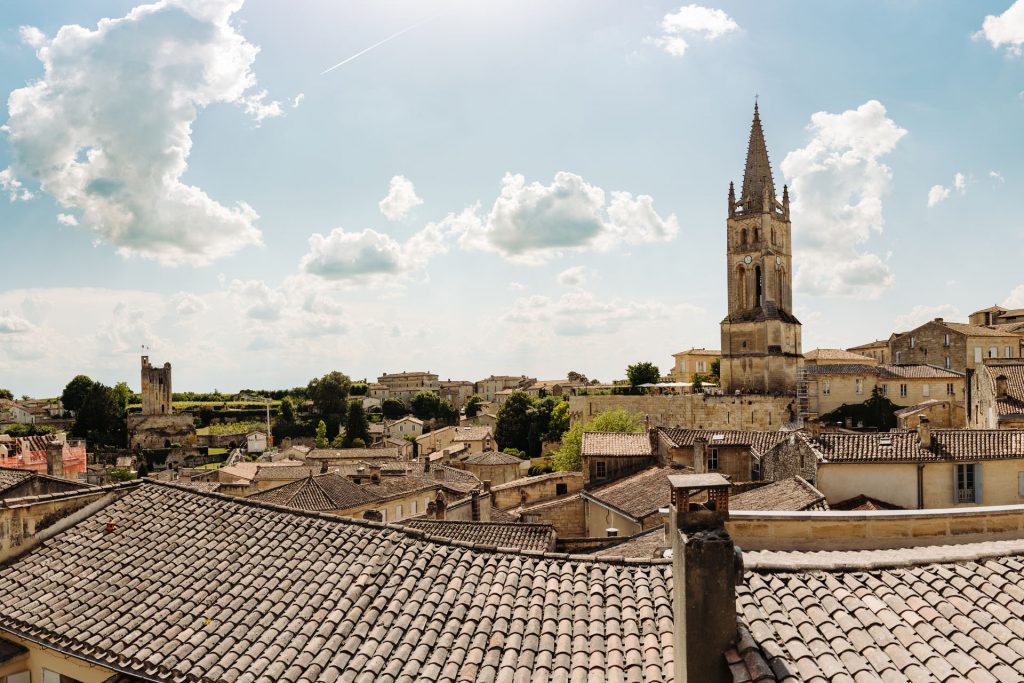
Bordeaux Grapes & the “Bordeaux Blend”
The vast majority of the wines produced in Bordeaux are red blends. There are 13 grape varieties that can be included in a Bordeaux red. The two most prevalent are Cabernet Sauvignon and Merlot. Which of these two dominates a blend depends on the growing area. Wines from The Left Bank are predominantly Cabernet Sauvignon, while those from The Right Bank are primarily Merlot. Cabernet Franc, the third-most common red grape grown in the region, is usually included in blends from both areas.
Bordeaux may be synonymous with red wine, but there are noteworthy white wines produced in the region, too. Sauternes in particular is a famous sweet wine from the Entre-Deux-Mers and is made from Sémillon, Sauvignon Blanc, and Muscadelle grapes.
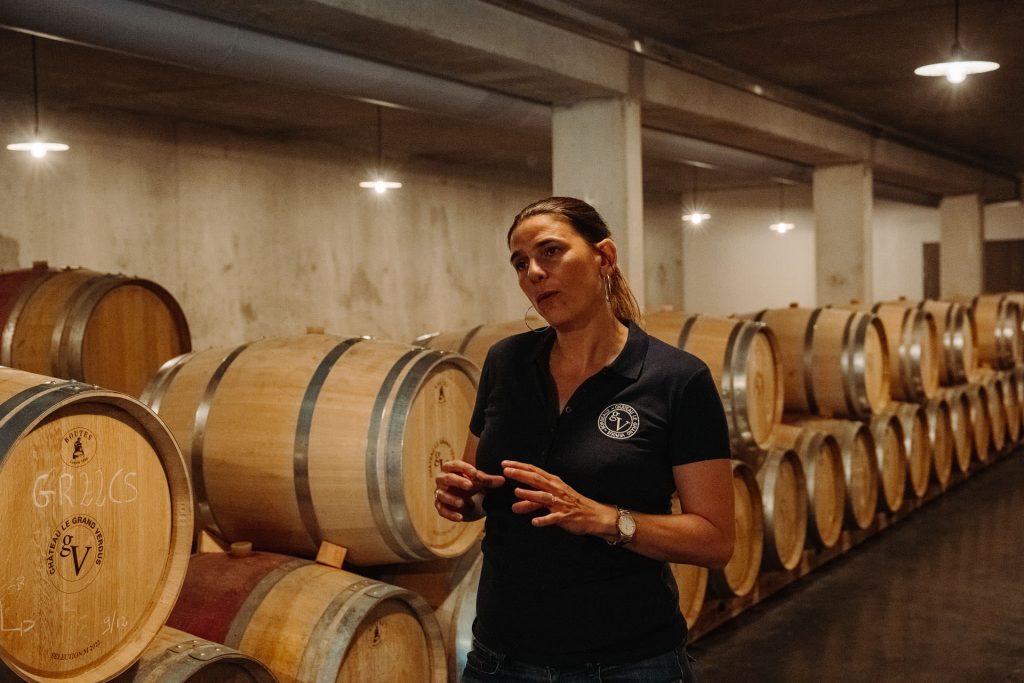
Bordeaux has influenced winemakers around the world, leading them to grow Cabernet Sauvignon and Merlot grapes in many regions. Many even use the phrase “Bordeaux blend” to describe their own wines, despite not producing them in France. This term simply serves as shorthand for a blended red wine made from grapes that originated in the Bordeaux region.
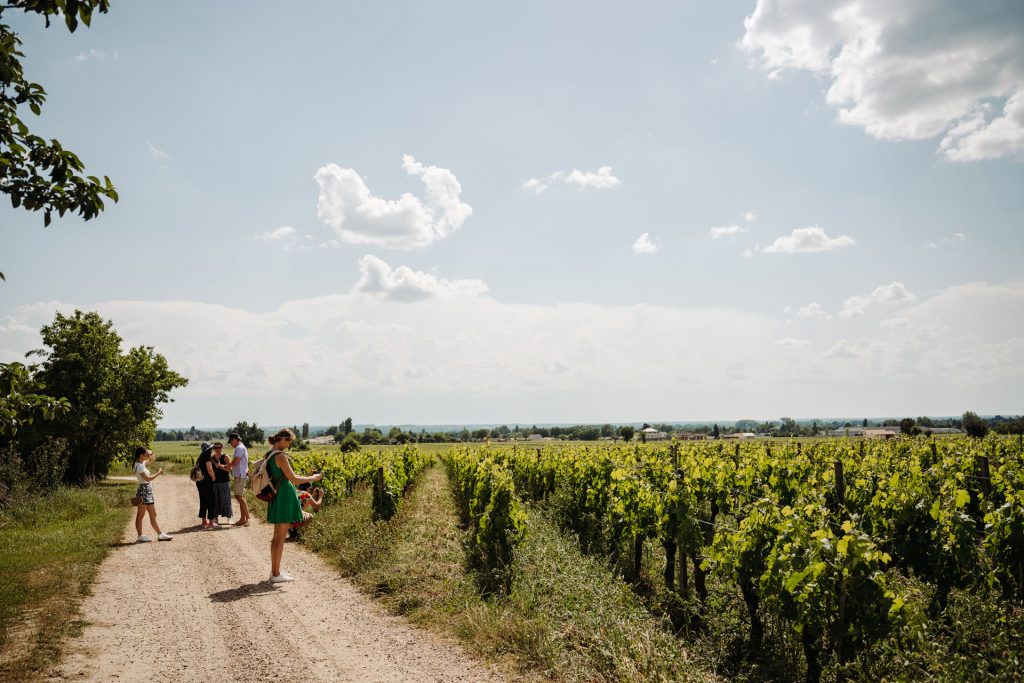
Best Bordeaux Wines
When it comes to wine, the term “best” isn’t easily quantifiable. Whether a wine gets top reviews or is a best-seller, the main criteria most people look for in a wine is whether they like how it tastes. There are some classification systems, though top-ranked wines often come with eye-popping price tags.
In 1855, officials created the first classification of the best Bordeaux wines based solely on price. Today, six châteaux hold the highest rank, including renowned names like Lafite-Rothschild, Latour, and Margaux. The classification includes five levels, with “Premier Cru” at the top, and these wines remain among the most expensive in the world. However, a high price doesn’t always guarantee a wine you’ll enjoy drinking.
There are other classifications today that consider quality rather than price, including “Cru Bourgeois” and “Saint-Émilion Grand Cru Classé.” With the latter, wineries are reevaluated every decade and can have their “cru” status revoked if quality declines.
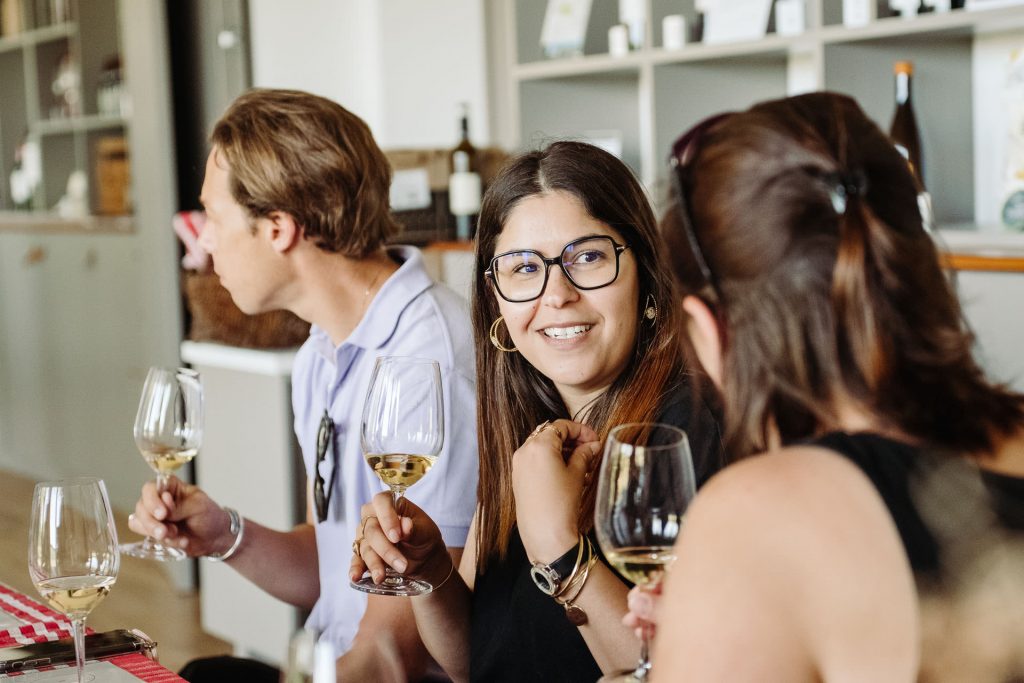
When comparing labels, look for these:
When you’re comparing labels, another phrase to look for is, “Grand Vin de Bordeaux.” This isn’t a classification, but it’s a designation given by an individual winery to what it considers its best Bordeaux wine.
It’s important to keep in mind that Bordeaux, like any wine, can vary significantly in quality and quantity from year to year. Every vintage is at the mercy of the weather, which impacts the size and consistency of the harvest. Wine review websites and guides can offer some insights into which vintages might be best (like this one from WineFolly), including notes about which you should age longer and which you might be able to get a good deal on.
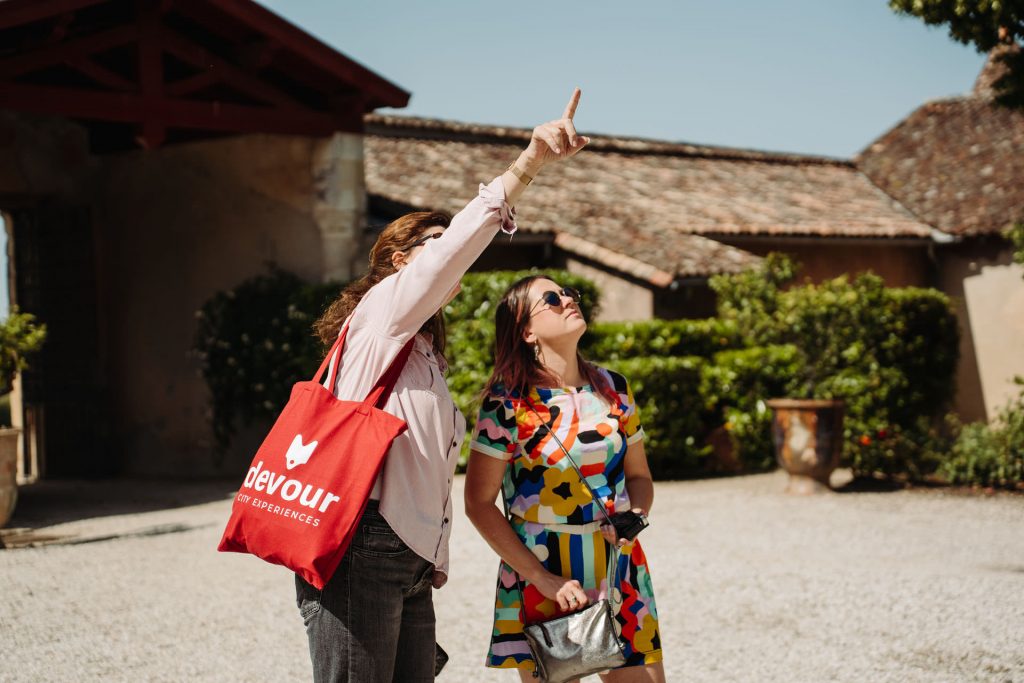
Tasting History: Bordeaux Food & Wine Tour
With so many variables to consider, from vintages to price points to flavor profiles, one of the easiest ways to learn more about the best Bordeaux wines is with the help of an expert. Not only will you get guidance on what to look for in a Bordeaux, you can also learn more about what makes this wine region unique and special, including its cuisine and culture.
And that’s just the kind of in-depth experience you’ll get with this Bordeaux Ultimate Food Tour.
You’ll explore the city of Bordeaux through its food, tasting traditional local pastries, cheeses, and chocolates with your guide. Between bites, you’ll see some of the city’s main monuments and learn about how winemaking has influenced the region’s culture over the centuries. Your final stop is a cozy wine bar, where a sommelier will lead you through a sampling of three Bordeaux wines.
With all the information you’ll get during this Bordeaux food and wine tour, you’ll know just what to look for on a wine label and how to find the best Bordeaux wines for the remainder of your stay in the area. And don’t miss a visit to the Bordeaux Wine Museum, the Cité du Vin, one of the biggest wine museums in the world.
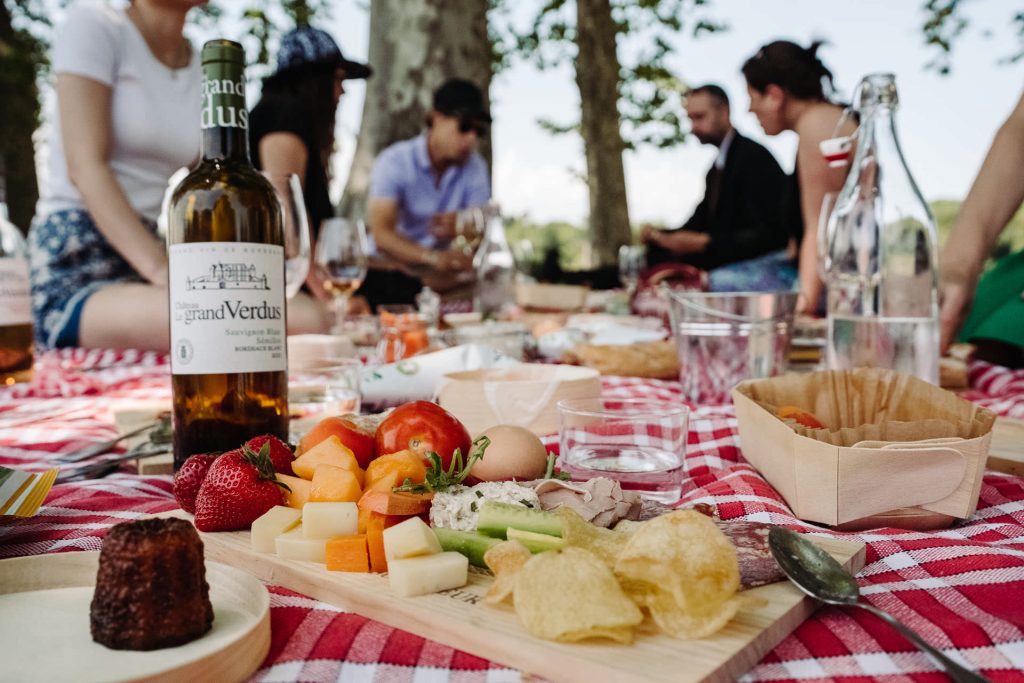
FAQ-
What makes Bordeaux wine unique among French wine regions?
Bordeaux wine stands out because of its long history and diverse terroir. The region’s unique blends of grape varieties, especially Cabernet Sauvignon and Merlot, also set it apart. The geography and climate make Bordeaux wines complex and celebrated.
What can I expect from Bordeaux wine tours?
Bordeaux wine tours take you to prestigious châteaux and picturesque vineyards. You taste several wines and learn about the winemaking process. Many tours also showcase local cuisine for a full experience.
Which Bordeaux vineyards should I visit for the best French wines?
You can visit famous estates like Château Margaux, Château Lafite Rothschild, and Château Cheval Blanc. Still, many lesser-known estates also produce top French wines. Explore beyond the big names for hidden gems.
What is the best way to experience Bordeaux wine if I’m short on time?
If you have limited time, join a guided wine tasting Bordeaux experience or a focused wine tour. These options let you sample a range of wines and learn about Bordeaux’s history and culture in just a few hours.

Are you ready to discover Bordeaux wine and taste the flavors that made the region legendary? Join us for the Bordeaux Ultimate Food Tour and experience the best of Bordeaux’s food and wine culture!

